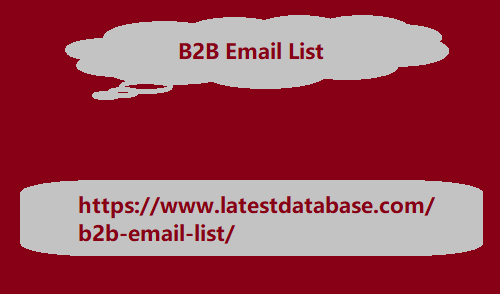Post by account_disabled on Jan 23, 2024 10:16:32 GMT
Although in recent years, the trend of "success" of native ads is increasing, what you should know is that, in fact, they have their origin decades ago. In 1915, the General Motors writer created what is described as the world's first native advertisement. To promote a new Cadillac engine model, Theodore F. MacManus published an article called "The Leadership Penalty," which was not a picture of the engine model, but an entire story that gave the impression of anything but. of an advertisement. At that time, it was a big risk taken on the shoulders of the company, but it reaped the fruits of success. In 1945, the ad was voted "The Greatest Ad of All Time." Cadillac The Penalty of Leadership After 100 years since the release of this ad, history has only continued to unfold, making native advertising a fantastic opportunity for the digital age.
However, for new marketers, creating a native ad can still be con B2B Email List fusing, and a native ad strategy can seem "intimidating." Below, a guide for all beginners to enter the "world of native advertising". Let's take a look! What are native ads? A simple definition – Native ads are a form of advertising where the ad matches the format and context of the surrounding content. A native social media ad looks like a regular social media post. A native ad in Google search results looks just like a regular suggestion of any other content. Why are native ads so popular? First, they provide a "normal" experience (in the sense that they don't offer annoyances like pushy ads) for the viewer. Instead of appearing in the middle of an article or completely interrupting the flow of navigation, native ads adapt completely to the activity the viewer is doing.

It's no wonder that marketing offices are increasing their marketing budgets that they dedicate only to native advertising every day. Native internet ads go through 3 main distribution channels: 1. Search: When native ads first appeared in internet search results they revolutionized it. Created a simple form for marketers to reach consumers who are looking for specific products. These Google search results for sports sunglasses, for example, include two native ads at the top, followed by organic search results. 2. Social platforms Just like search, the search engine, social platforms have become a new home for native advertising, especially social platforms like Instagram or Facebook. By having social networks at their fingertips, advertisers have the ability to gather all the data they need about consumers through the various demographics and analytics that social networks themselves provide.
However, for new marketers, creating a native ad can still be con B2B Email List fusing, and a native ad strategy can seem "intimidating." Below, a guide for all beginners to enter the "world of native advertising". Let's take a look! What are native ads? A simple definition – Native ads are a form of advertising where the ad matches the format and context of the surrounding content. A native social media ad looks like a regular social media post. A native ad in Google search results looks just like a regular suggestion of any other content. Why are native ads so popular? First, they provide a "normal" experience (in the sense that they don't offer annoyances like pushy ads) for the viewer. Instead of appearing in the middle of an article or completely interrupting the flow of navigation, native ads adapt completely to the activity the viewer is doing.

It's no wonder that marketing offices are increasing their marketing budgets that they dedicate only to native advertising every day. Native internet ads go through 3 main distribution channels: 1. Search: When native ads first appeared in internet search results they revolutionized it. Created a simple form for marketers to reach consumers who are looking for specific products. These Google search results for sports sunglasses, for example, include two native ads at the top, followed by organic search results. 2. Social platforms Just like search, the search engine, social platforms have become a new home for native advertising, especially social platforms like Instagram or Facebook. By having social networks at their fingertips, advertisers have the ability to gather all the data they need about consumers through the various demographics and analytics that social networks themselves provide.
